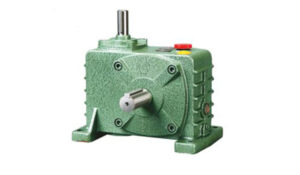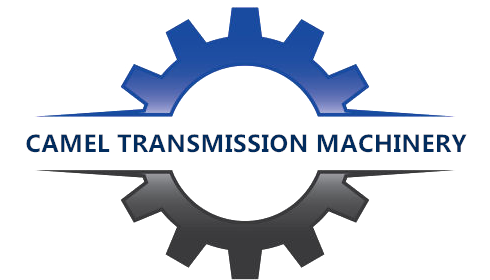Analysis of Common Problems of Worm Gear Reducer

Worm gear reducer is a kind of transmission machinery with compact structure, large transmission ratio and self-locking function under certain conditions. Among them, the hollow shaft type worm gear reducer not only has the above characteristics, but also has convenient installation and reasonable structure, and has been more and more widely used. It is equipped with a helical gear reducer at the input end of the worm gear reducer. The multi-stage reducer can obtain a very low output speed, which has higher efficiency than the single-stage worm reducer, and has low vibration, noise and energy. Low consumption. 1. Common problems and their causes
1. The reducer heats up and leaks oil. In order to improve efficiency, worm gear reducers generally use non-ferrous metals as worm wheels, and worms use harder steel. Because it is a sliding friction transmission, more heat will be generated during operation, which will cause differences in thermal expansion between the parts and seals of the reducer, thereby forming gaps in each mating surface, and the lubricating oil will become thinner due to the increase in temperature, which is easy to cause leakage .
There are four main reasons for this situation. One is the unreasonable combination of materials; the other is the poor quality of the friction surface; the third is the incorrect choice of lubricant; the fourth is the poor assembly quality and use environment.
2. Worm gear wear. The worm wheel is generally made of tin bronze, and the matched worm material is hardened with 45 steel to HRC4555, or 40Cr hardened HRC5055, and then ground to a roughness of Ra0.8μm by a worm grinder. The reducer wears very slowly during normal operation, and some reducers can be used for more than 10 years. If the wear rate is fast, it is necessary to consider whether the selection is correct, whether it is overloaded, and the material of the worm gear, assembly quality or use environment.
3. The drive pinion helical gear is worn. It usually occurs on the reducer installed vertically, mainly related to the amount of lubricating oil added and the oil variety. When installed vertically, it is easy to cause insufficient lubricating oil. When the reducer stops running, the transmission gear oil between the motor and the reducer is lost, and the gears cannot get the proper lubrication protection. When the reducer is started, the gears are not effectively lubricated, causing mechanical wear and even damage.
4. Worm bearing is damaged. When a failure occurs, even if the gearbox is well sealed, it is often found that the gear oil in the reducer is emulsified, and the bearings are rusted, corroded and damaged. This is because the condensed water generated by the gear oil temperature rises and cools down after a period of operation of the reducer is mixed with water. Of course, it is also closely related to bearing quality and assembly process.
Second, the solution
1. Ensure assembly quality. You can buy or make some special tools. When disassembling and installing the parts of the reducer, try to avoid hitting with other tools such as hammers; when replacing gears and worm gears, try to use original parts and replace them in pairs; when assembling the output shaft, pay attention Tolerance matching; anti-sticking agent or red lead oil should be used to protect the hollow shaft to prevent wear, rust, or dirt on the mating area, which is difficult to disassemble during maintenance. 2. Selection of lubricants and additives. Worm gear reducers generally use 220# gear oil. For reducers with heavy loads, frequent starts, and poor use environments, some lubricating oil additives can be used to make the gear oil still adhere to the gear surface when the reducer stops running, forming protection Membrane to prevent heavy load, low speed, high torque and direct contact between metals when starting. The additives contain seal ring regulator and anti-leakage agent to keep the seal ring soft and elastic, effectively reducing lubricating oil leakage. 3. Selection of the installation location of the reducer. Where the location permits, try not to use vertical installation. In vertical installation, the amount of lubricating oil added is much larger than that in horizontal installation, which may cause heat generation and oil leakage of the reducer.
4. Establish a lubrication maintenance system. The reducer can be maintained according to the “five fixed” principle of lubrication work, so that every reducer has a person responsible for regular inspections, and it is found that the temperature rise is obvious, if the temperature exceeds 40 ℃ or the oil temperature exceeds 80 ℃, the quality of the oil decreases or the oil If more copper powder and abnormal noise are found in the system, stop using it immediately, check and repair in time, troubleshoot, and replace the lubricant. When adding oil, pay attention to the amount of oil to ensure that the reducer is properly lubricated.
